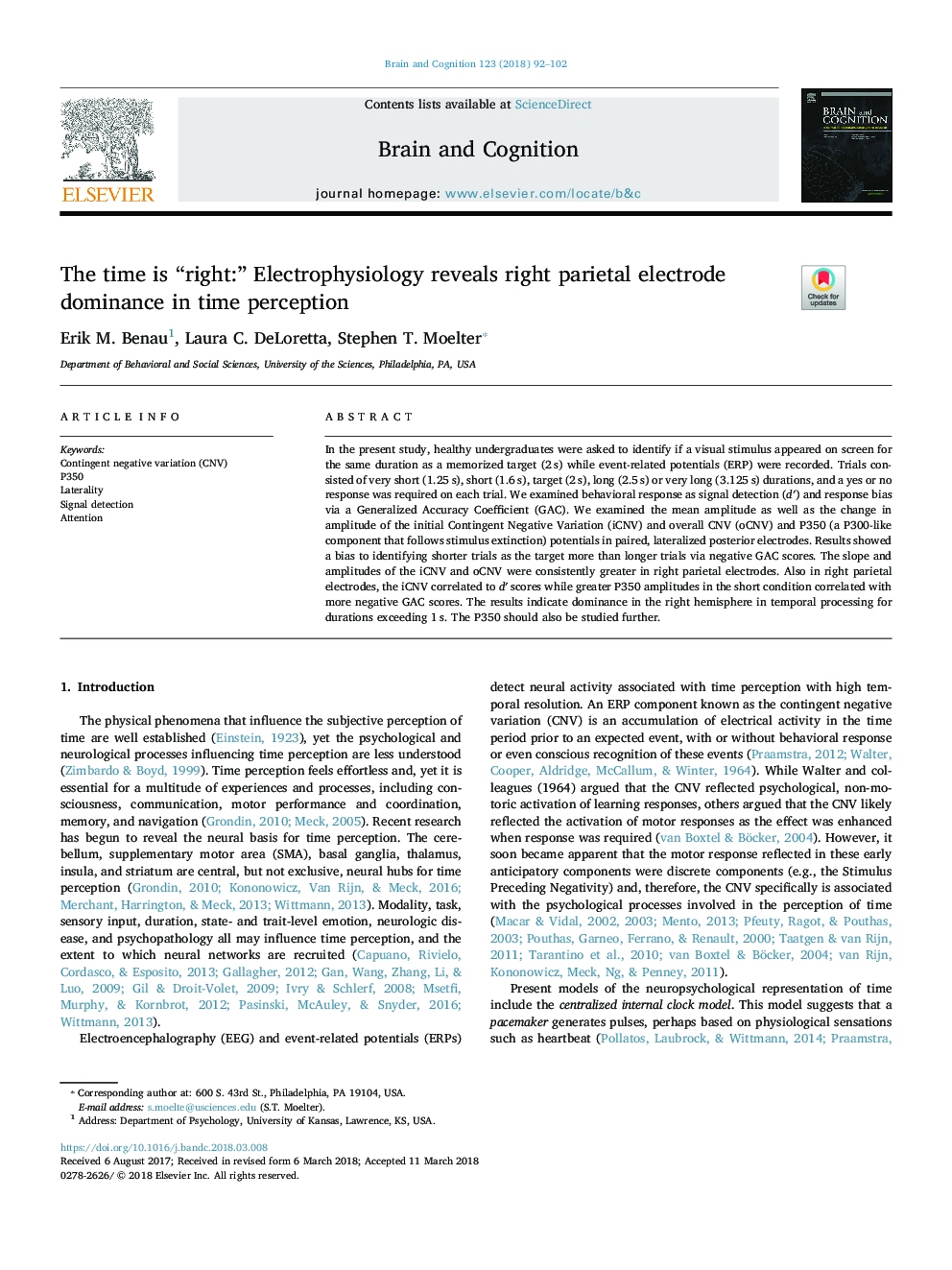| Article ID | Journal | Published Year | Pages | File Type |
|---|---|---|---|---|
| 7282650 | Brain and Cognition | 2018 | 11 Pages |
Abstract
In the present study, healthy undergraduates were asked to identify if a visual stimulus appeared on screen for the same duration as a memorized target (2â¯s) while event-related potentials (ERP) were recorded. Trials consisted of very short (1.25â¯s), short (1.6â¯s), target (2â¯s), long (2.5â¯s) or very long (3.125â¯s) durations, and a yes or no response was required on each trial. We examined behavioral response as signal detection (dâ²) and response bias via a Generalized Accuracy Coefficient (GAC). We examined the mean amplitude as well as the change in amplitude of the initial Contingent Negative Variation (iCNV) and overall CNV (oCNV) and P350 (a P300-like component that follows stimulus extinction) potentials in paired, lateralized posterior electrodes. Results showed a bias to identifying shorter trials as the target more than longer trials via negative GAC scores. The slope and amplitudes of the iCNV and oCNV were consistently greater in right parietal electrodes. Also in right parietal electrodes, the iCNV correlated to dâ² scores while greater P350 amplitudes in the short condition correlated with more negative GAC scores. The results indicate dominance in the right hemisphere in temporal processing for durations exceeding 1â¯s. The P350 should also be studied further.
Related Topics
Life Sciences
Neuroscience
Cognitive Neuroscience
Authors
Erik M. Benau, Laura C. DeLoretta, Stephen T. Moelter,
